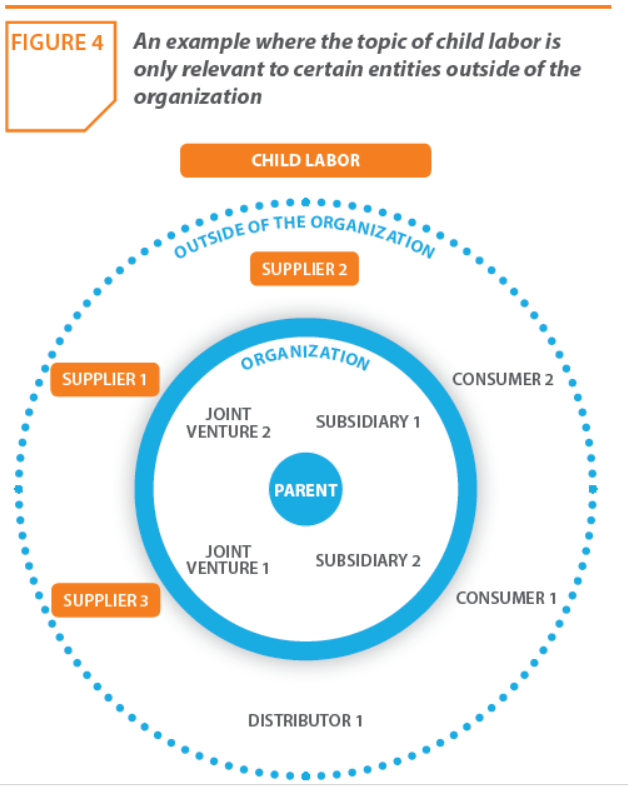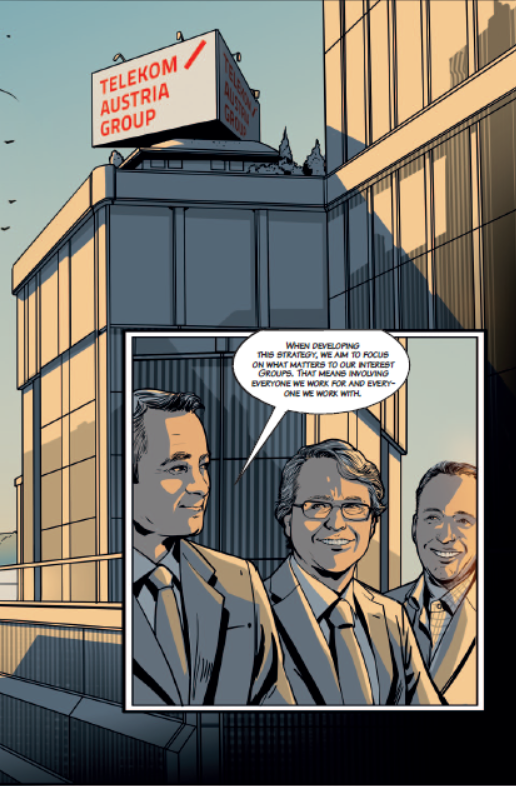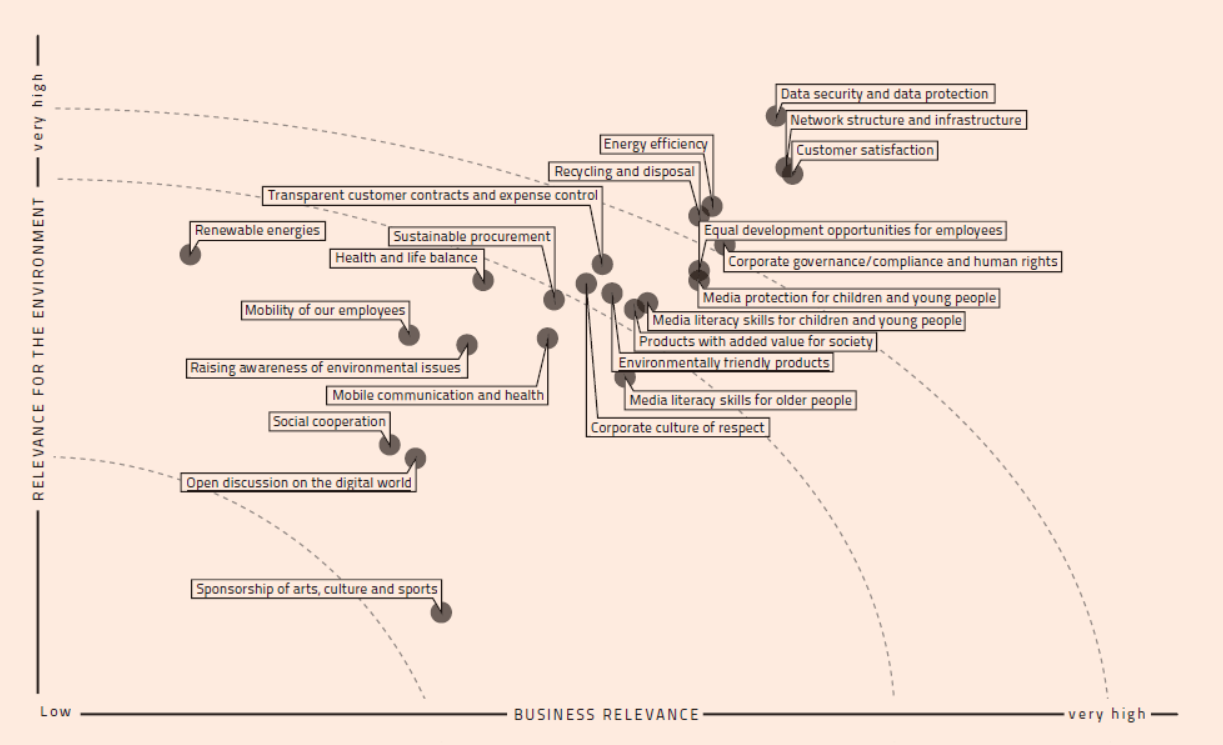As you know, we LOVE reports. And we LOVE to have FUN. So working on a report that's fun is exactly what Serious Play is about for us. For Caesars Entertainment, it's pretty much the same. As a company whose entire DNA is all about inspiring grown-ups to play, Caesars takes corporate citizenship as seriously as it takes the memorable entertainment experiences it provides for its guests.
And here you have it, Caesars Entertainment's second G4 (core) report now published. And it's called Serious Play.
and the infographic of 2013 highlights
As with any self-respecting G4 report, material issues are clearly stated:
And the issues link to G4 material Aspects and performance indicators in this chart, so that it all hangs together as a G4 report should do.
Now, getting past the G4 basics, you will notice a mix of serious and play in the Caesars report this year, supported by an outstanding contribution in corporate citizenship - including achievement of some ambitious environmental goals. At Caesars, corporate citizenship is not just a project or something people do in addition to their work. It's the way people work. After conversations with more than fifty managers and staff at Caesars, in the preparation of this report, I can personally testify to a spirit of citizenship - and fun - as well as strategic vision, that is rarely found in organizations.
The Caesars Code of Commitment was created in 2000 and at the time, led the industry in establishing a framework of behavior that continues to guide the way Caesars work.
Today, this supports an entire strategic approach to citizenship that is embedded in everything the company does. Some examples:
Horseshoe Cincinnati: The report showcases the new city-integrated casino that opened up in 2013 in Cincinnati, and the ways in which this downtown casino-entertainment property has become an important contributor to city life. More than 92% of the 1,500 strong workforce is from the Cincinnati area, 75% of contracts for goods and services are locally sourced and a large part of this is with diverse suppliers, and during construction, nearly 37%
of all contracts worth more than $55 million were awarded to minority or women-owned construction firms. Kevin Kline, Horseshoe Cincinnati GM, supports the city in a variety of ways. For example, he co-chairs the
Cincinnati Mayor’s Economic Inclusion Advisory Council to help
make inclusion part of the Cincinnati business culture and develop
best practices for achieving greater diversity in city contracts.
Members of the management team at Horseshoe Cincinnati
maintain board level positions with 18 local city and community
organizations and the property is a home to many fundraising events for local charities. Horseshoe Cincinnati also takes part in Caesars CodeGreen environmental strategy and made a strong contribution to delivering goals of energy and emissions reductions, water use reduction and increased waste diversion this year. This is Serious Play in Cincinnati, showing how doing business with a Code of Commitment mindset generates positive social, environmental and economic outcomes for all.
Harrah's Cherokee: Caesars' partnership with the Eastern Band of the
Cherokee Nation dates back to 1997, and in 2013, the partners completed a $633 million expansion project representing the
largest hospitality development project in the U.S. It was fascinating for me to research and hear about the way revenues from casino and hospitality offerings have transformed the lives of the members of the Eastern Band of Cherokees. This is how it's described in the report:
"Most Native American communities reside on reservation properties, far from mainstream economic activity. As a result, it has been difficult for many Native American tribes to gain access to capital and community services such as education, healthcare and employment opportunities. Data from the U.S. Census Bureau shows, for example, that 29.1% of Native Americans (and Alaska Natives) were in poverty in 2012 versus 15.9% in the nation as a whole. We believe that our partnership with Native American tribes makes a contribution to the prosperity and perpetuity of the Native American way of life that serves the interests of our society as a whole." I think this is the ultimate goal of corporate citizenship - doing business ethically, transparently, in partnership and driving social benefits.
"Most Native American communities reside on reservation properties, far from mainstream economic activity. As a result, it has been difficult for many Native American tribes to gain access to capital and community services such as education, healthcare and employment opportunities. Data from the U.S. Census Bureau shows, for example, that 29.1% of Native Americans (and Alaska Natives) were in poverty in 2012 versus 15.9% in the nation as a whole. We believe that our partnership with Native American tribes makes a contribution to the prosperity and perpetuity of the Native American way of life that serves the interests of our society as a whole." I think this is the ultimate goal of corporate citizenship - doing business ethically, transparently, in partnership and driving social benefits.
It's not all serious, though, at Cherokee. There's also lots of fun going on. That's serious fun. Several Caesars properties take part in the annual National Breast Cancer Pink Week where everything from poker table felts to golf balls to balloons and more are colored pink. Harrah's Cherokee won an award among Caesars properties for a magnificent Pink Week which included days such as Mammo Monday, Wacky Smack Wednesday and Bra Fight Friday where both employees and guests enjoy the fun while learning about breast cancer, remembering lost loved ones and making a contribution to support breast cancer research. The highlight of the week is the pageant. How many senior managers in how many organizations would get up on stage wearing a wacky bra designed by an employee? See how it happens at Cherokee.
Citizenship is Citizenship: One of the most touching things for me in the Caesars report is a description of how Caesars supports its employees to receive U.S. citizenship. There is a Caesars Citizenship Rewards Program for Las Vegas employees who become naturalized citizens of the United States. Caesars recognizes employees for their dedication and commitment to becoming naturalized citizens with a refund of up to 100% of the application. Around 250 employees have received this benefit to date.
Caesars 2013-2014 Corporate Citizenship Report is full of examples of how Caesars engages in Serious Play in many other aspects of the company's daily life - whether this is taking a stand in public policy support for LGBT rights, climate change and more, supporting social causes through the Caesars Foundation and HERO Volunteer programs or leading the way in Responsible Gaming with a range of resources to raise awareness and provide assistance to those who need it.
But I won't go into too much detail. You can guess why.... that's it... take a look and give feedback. You'll find a few surprises among the pages too.... just for fun.
elaine cohen, CSR consultant, Sustainability Reporter, HR Professional, Ice Cream Addict. Author of Understanding G4: the Concise guide to Next Generation Sustainability Reporting AND Sustainability Reporting for SMEs: Competitive Advantage Through Transparency AND CSR for HR: A necessary partnership for advancing responsible business practices . Contact me via www.twitter.com/elainecohen or via my business website www.b-yond.biz (Beyond Business Ltd, an inspired CSR consulting and Sustainability Reporting firm). Check out our G4 Report Expert Analysis Service - for published G4 reports or pre-publication - write to Elaine at info@b-yond.biz to help make your G4 reporting even better.









































































